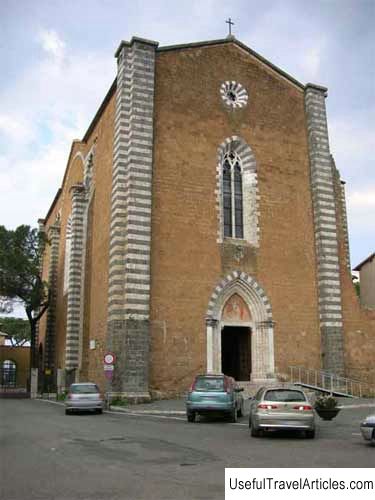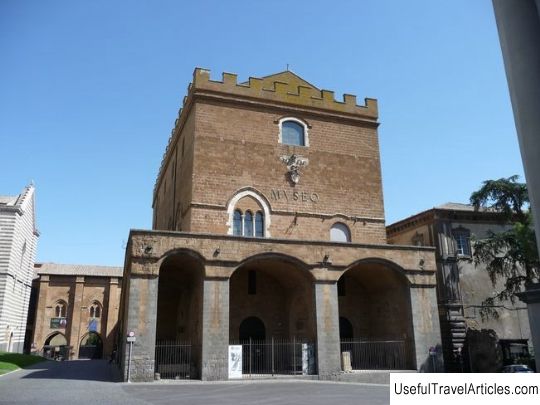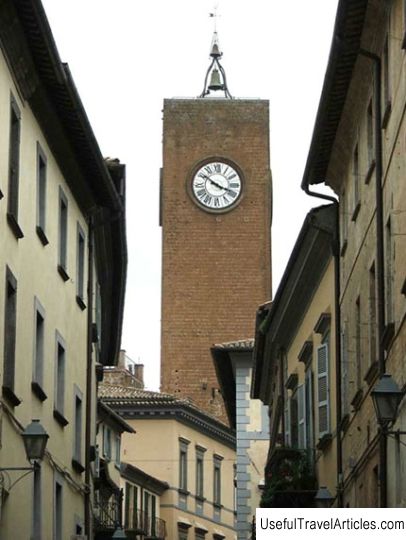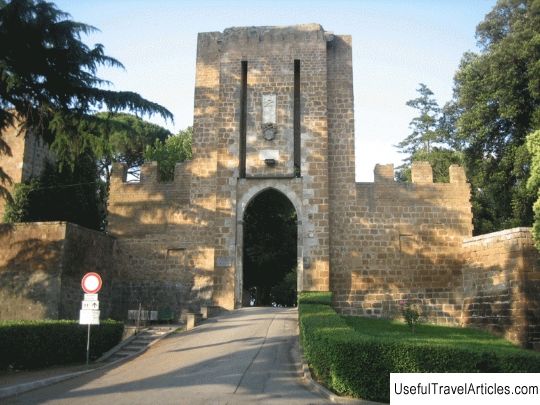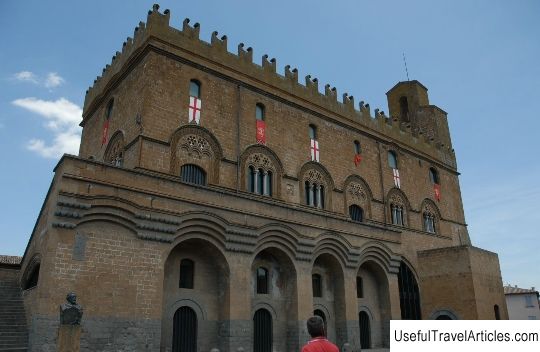Orvieto Cathedral (Cattedrale di Orvieto) description and photos - Italy: Orvieto
Rating: 8,0/10 (543 votes) 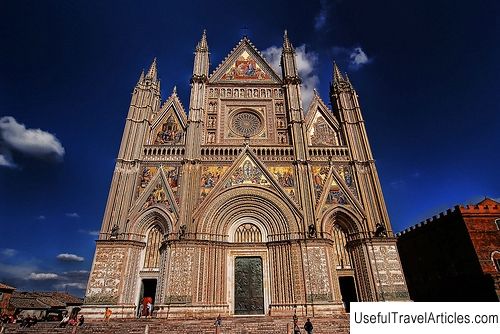
Orvieto Cathedral (Cattedrale di Orvieto) description and photos - Italy: Orvieto. Detailed information about the attraction. Description, photographs and a map showing the nearest significant objects. The title in English is Cattedrale di Orvieto. Photo and descriptionOrvieto Cathedral is a huge church, built in the 14th century by order of Pope Urban IV to store the so-called "antimension of Bolsena" - a silk altar cloth on which the sacrament of the Eucharist is performed ... A wonderful story is connected with this subject: they say that in 1263 in the town of Bolsena, a wandering priest, who doubted the truth of the manifestation of the Transubstantiation (the transformation of bread and wine into the Body and Blood of Christ), saw that his guests - the very bread - began to bleed, so much that it stained the altar cloth. This cloth is kept today in a specially built chapel in the Cathedral. The cathedral itself dominates the city, located at the mouth of a volcano. Its facade is a classic example of religious architecture with various elements from the 14th to 20th centuries, a huge rosette window, gold mosaic and three bronze doors. Inside there are two chapels decorated with frescoes by the greatest Italian masters depicting scenes from the Doomsday. The construction of the cathedral dedicated to the Dormition of the Most Holy Theotokos took almost three centuries. The first foundation stone was laid in November 1290 by Pope Nicholas IV himself. And Fra Bevignate from Perugia supervised the construction - he used the drawings of Arnolfo di Cambio, the architect of the Cathedral of Florence. The Orvieto Church was originally conceived as a Romanesque basilica with a central nave and two side chapels, but later it was decided to build it in the Italian Gothic style. In 1309, a native of Siena, Lorenzo Maitani, was appointed architect, who completely changed the design of the cathedral. He reinforced the outer walls with flying buttresses (buttresses), which, however, turned out to be unnecessary, and rebuilt the apse, adding a large stained glass. Maitan was the author of the facade up to the level where the bronze statues of the Evangelists stand. After his death, various people visited the position of the architect of the cathedral, including the famous Andrea Pisano. Between 1451 and 1456, Antonio Federighi decorated the Renaissance facade, and in 1503 Michele Sanmicheli completed the central gable and added a right spire. The final chords in the decoration of the facade were made by Ippolito Skalza at the end of the 16th century. And three bronze doors leading inside the cathedral were completed only in 1970. The interior of the cathedral is richly decorated with frescoes and other works of art. The huge 15th-century organ of 5,585 tubes and the Pieta, carved by Ippolito Skalza in 1579, are invariably drawn to tourists' attention - it took the artist eight years to create four figures of this impressive marble composition. The construction of the wooden choirs began in 1329 and can still be seen in the apse today. Behind the altar is a series of damaged Gothic frescoes depicting scenes from the life of the Virgin Mary. Once this cycle, created in the 14th century, was the largest in Italy. In the northern part of the cathedral there is the Chapel del Corporale, built in the mid-14th century to store the sacred canvas from Bolsena. A little further is the chapel of Madonna di San Brizio, built in the 15th century and almost identical to the first. The great painters Fra Angelico and Perugino worked on its decoration. Right in front of the cathedral is the huge building of the Palazzo del Opera del Duomo, built in 1359 to house administrative offices. It was significantly expanded in the second half of the 19th century, when a museum was opened on the ground floor, in the collections of which you can see Etruscan artifacts found in the vicinity of Orvieto, a city that was the capital of the Etruscan civilization. Next to the Palazzo there is another museum - the Claudio Faina Museum, also dedicated to Etruscan art.       We also recommend reading Cathedral of St. Jadwig (Konkatedra sw. Jadwigi) description and photos - Poland: Zielona Gora Topic: Orvieto Cathedral (Cattedrale di Orvieto) description and photos - Italy: Orvieto. |
